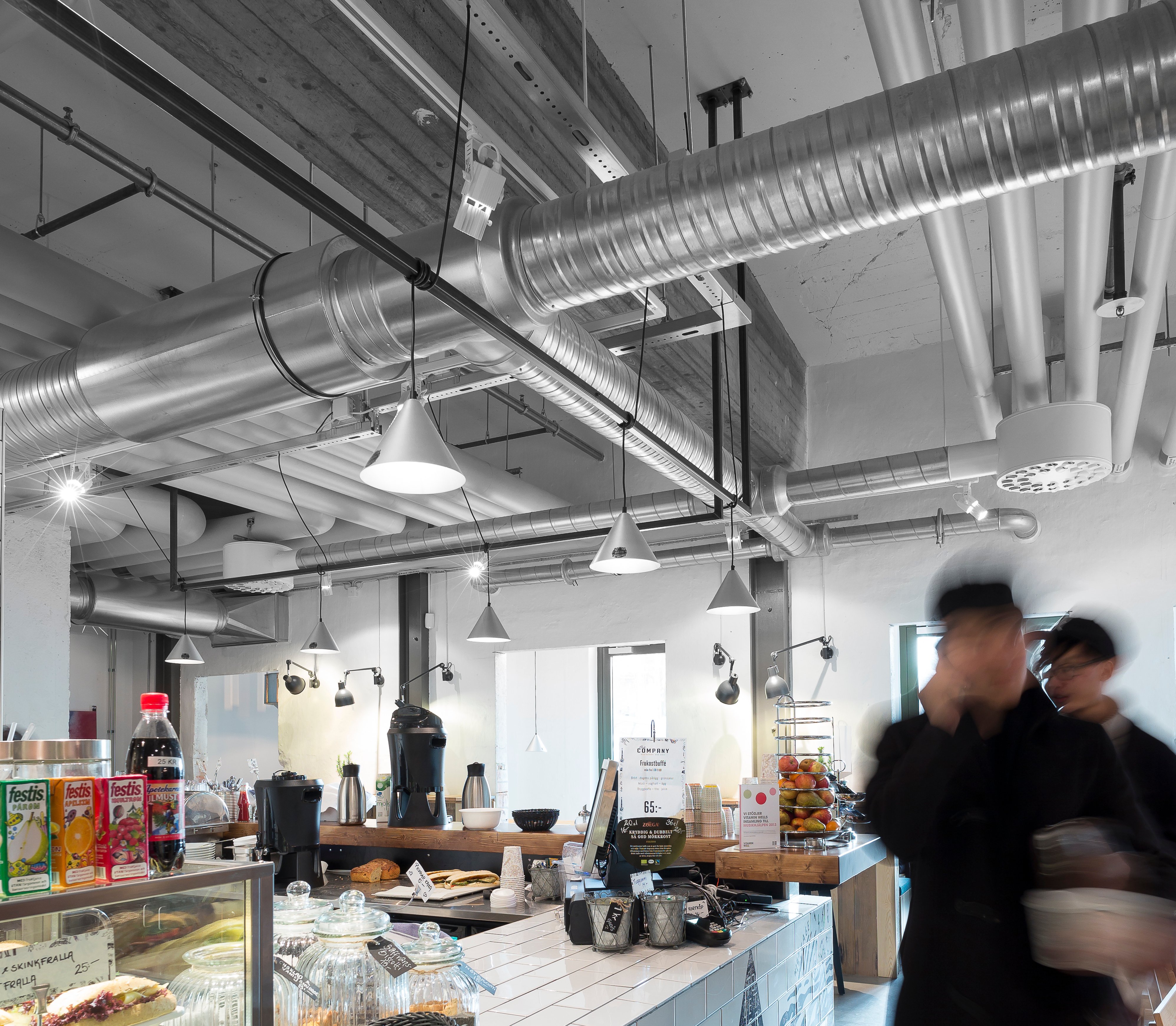Restaurant
Ventilation in restaurants is essential for creating a comfortable and enjoyable dining experience, combining both aesthetic appeal and functionality. Proper ventilation ensures high indoor air quality by removing cooking odors, smoke, and excess humidity, allowing guests to enjoy their meals in a fresh and pleasant atmosphere. Additionally, well-designed systems can be seamlessly integrated into the restaurant's interior, enhancing its overall look without compromising on performance. Acoustic considerations are also important, as effective ventilation contributes to a quieter environment, allowing for comfortable conversation. Together, these elements ensure a balanced and inviting space where both guests and staff can thrive.
Diffusers
Recommended diffusers
Recommended diffusers in the kitchen
At low-impulse supplied air, cooling temperature air is added at a low velocity from either ceiling- or wall mounted diffusers. That way, the clean air will partially displace the contaminated air. The need for this type of supplied air method usually arises when the environment and health issues demand supplied air as a substitute for the air which is exhausted by fume cubboards, cooking hoods or other types of exhaust diffusers. This often results in air changes up to 50 times per hour.

Budapest, VakVarjú Buda
Kitchen extract ductwork
Kitchen extract poses a specific fire risk due to the presence of combustible contaminants, namely grease. Kitchen extract ducts that pass through multiple fire compartments on their way to the outside, are at risk of being exposed to a fire in those compartments. This is outside the kitchen compartment itself. The concern is that a fire will reach the kitchen ductwork that passes through the compartment and cause the grease inside the duct to ignite.


